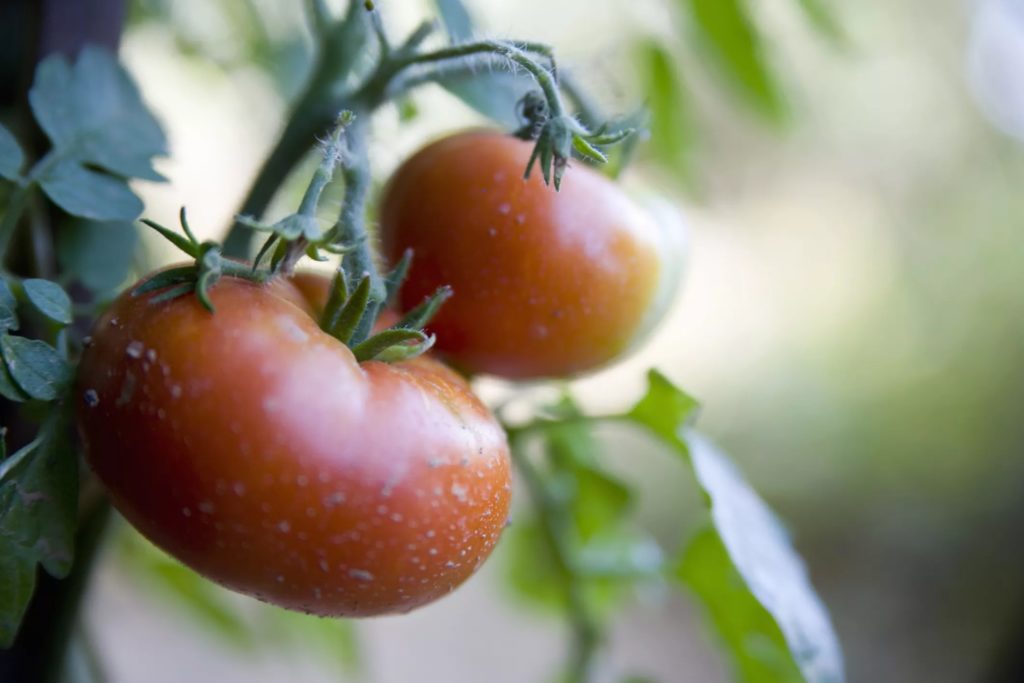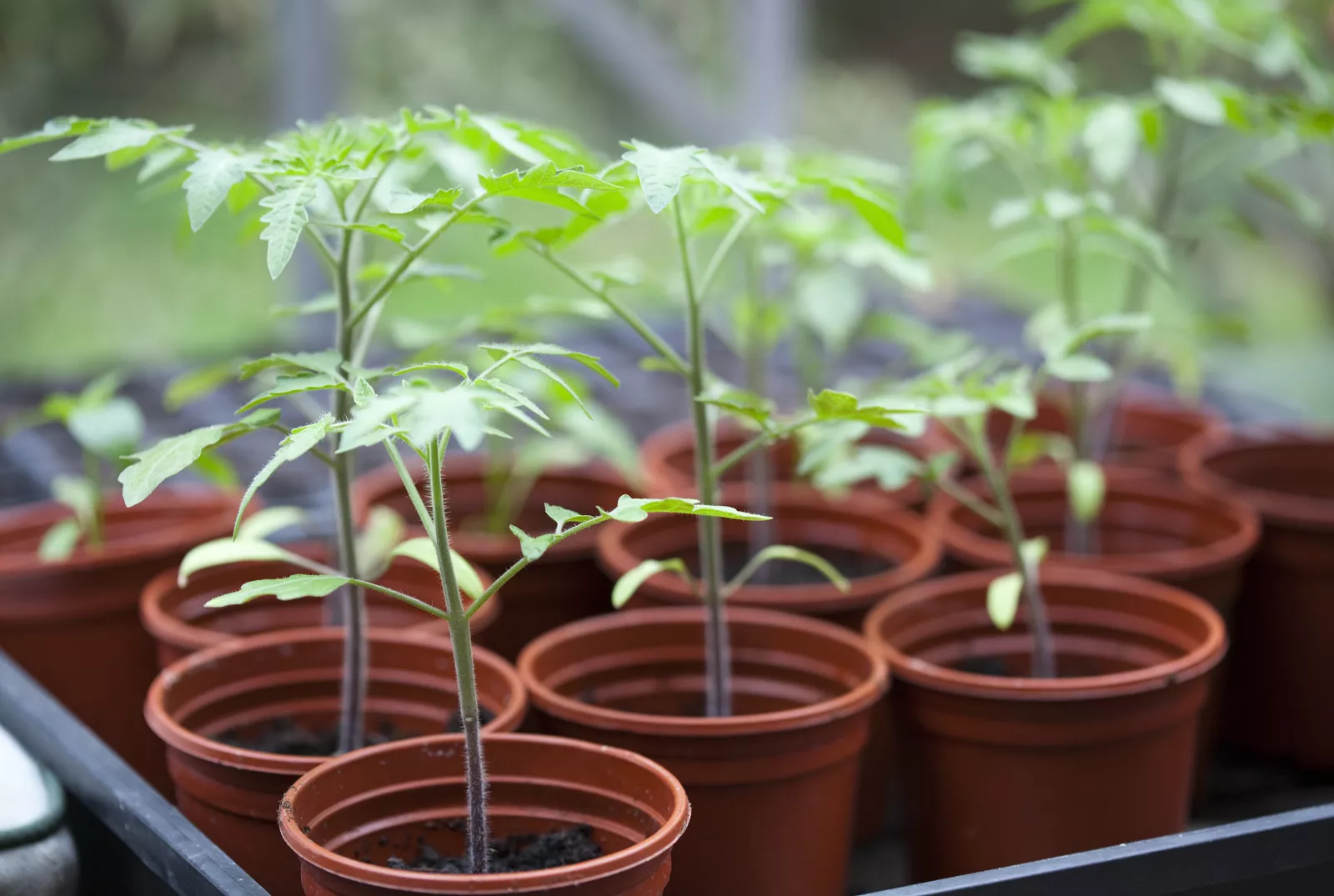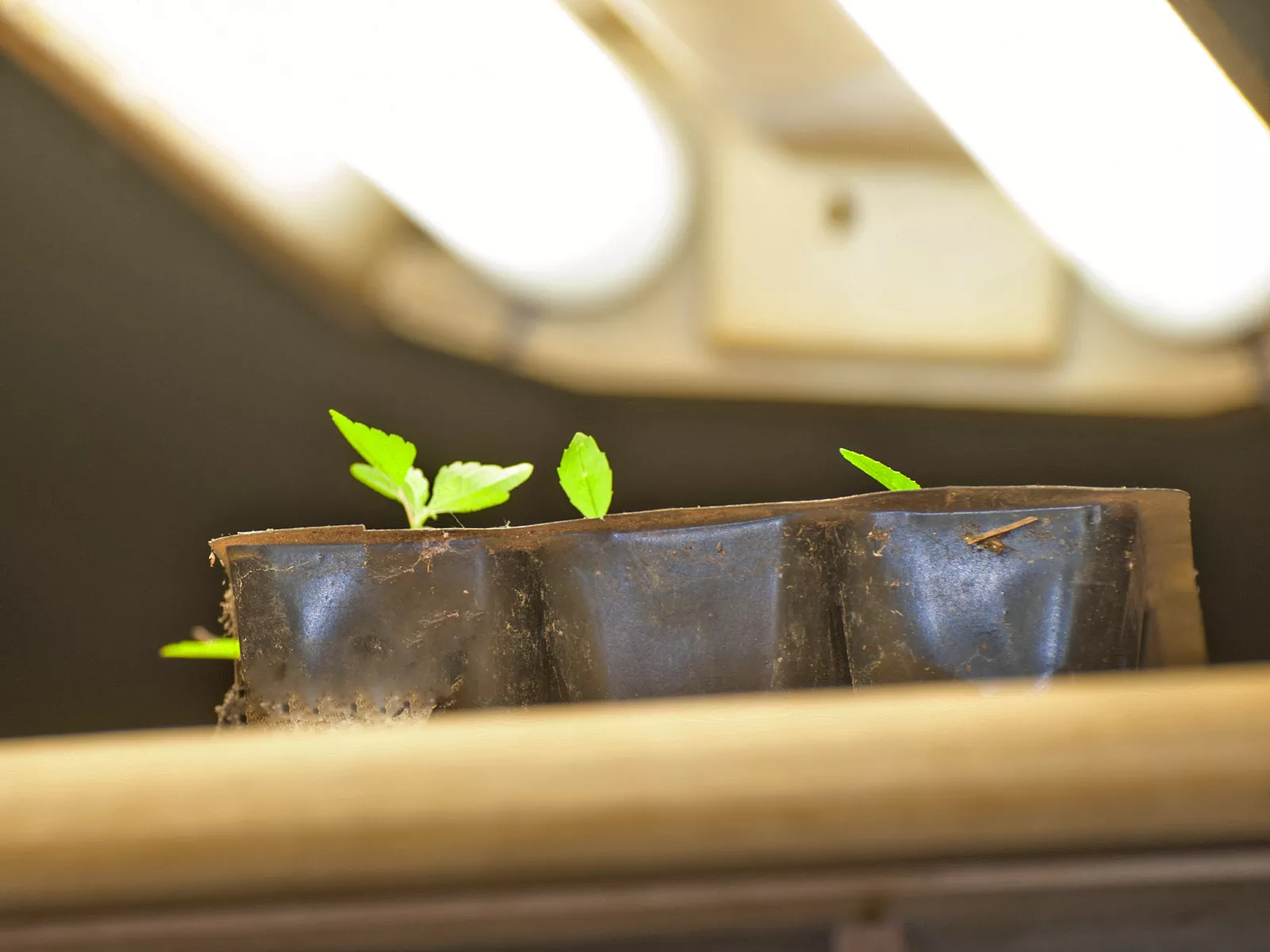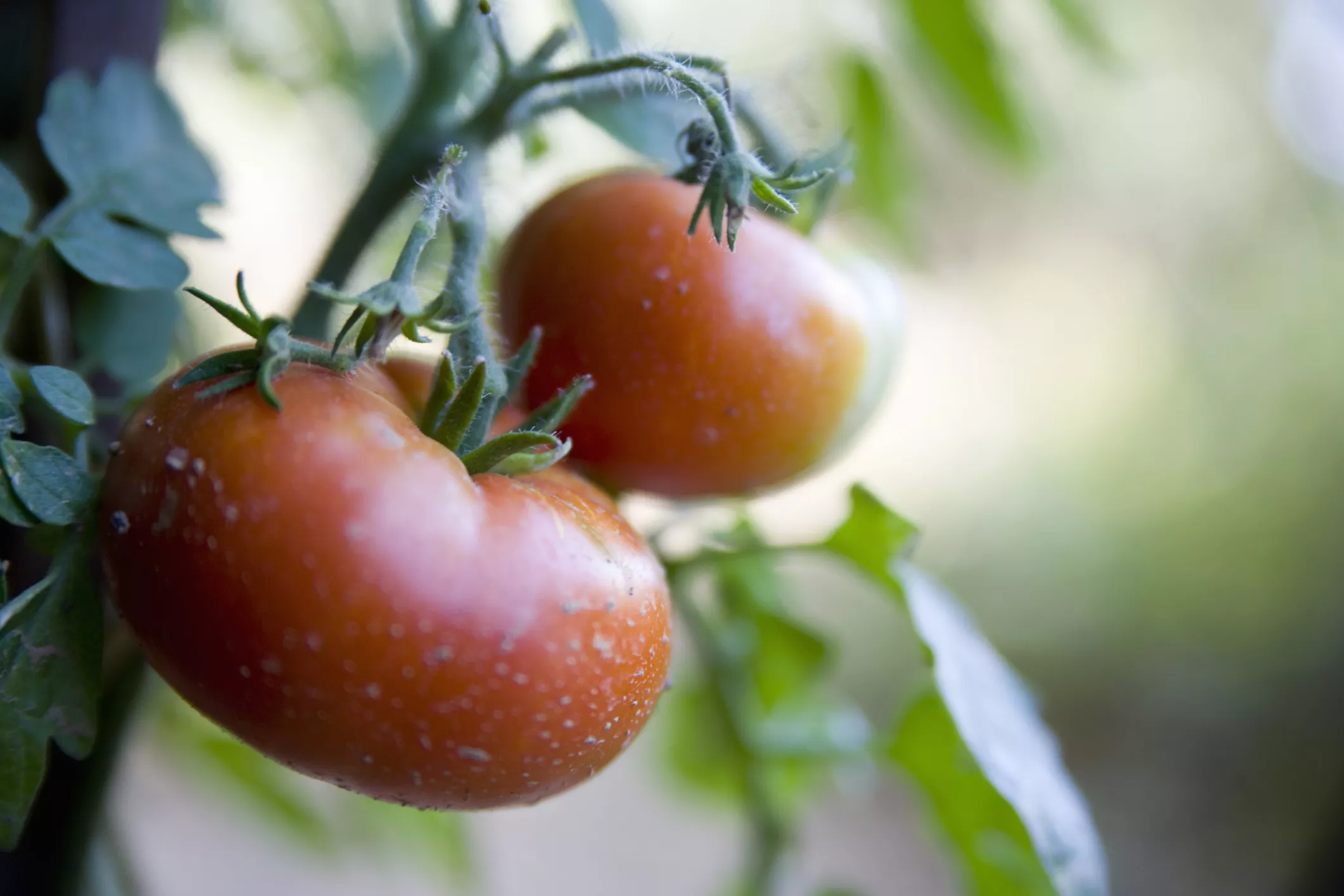
Tomatoes are a versatile addition to any edible garden. Although technically a fruit, they add juicy flavor to countless dishes. While they’re popular and relatively easy to grow, tomatoes can also be susceptible to pests and diseases.
The secret to growing mouthwatering tomatoes lies in variety selection, starting strong, and preventing problems before they arise. Follow these time-tested tips to cultivate the envy of your fellow gardeners and enjoy a bountiful harvest of delicious tomatoes!
Start Strong: Seedlings Need Your Care

-
Don’t Crowd Seedlings: If you’re starting from seed, give your seedlings plenty of space to thrive. Thin them to one vigorous plant per pot once they have their first set of true leaves. Crowding stresses them, hindering growth and increasing disease risk later on. Transplant them into individual 4-inch pots shortly after.
-
Light Up Their Lives: Seedlings crave full, direct sunlight. During winter months, even a sunny window might not provide enough. If you’re starting seeds indoors, consider using artificial lights for 14-18 hours daily. Position the lights close to the seedlings (a few inches) to encourage sturdy growth, not leggy stems. Raise the lights (or lower the plants) as they grow taller. When transplanting outdoors, choose the sunniest spot in your vegetable garden.
-
Give Them a Breeze: Strong stems are essential for healthy tomato plants. While they’ll experience natural air circulation outdoors, indoor seedlings need a little help. Turn on a fan for 5-10 minutes twice a day to simulate wind. Alternatively, gently rub the tops of the plants back and forth for a few minutes a couple of times a day. This strengthens the stems and treats you to a delightful tomato aroma!

Tomato seedlings require full and straight light.
Setting the Stage for Success: Planting and Care
-
Warm Up the Soil: Tomatoes are heat lovers. They won’t thrive until both the air and soil temperatures are consistently warm. Speed up soil warming by covering the planting area with a red or black plastic sheet a few weeks before planting. Warmer soil translates to earlier tomato enjoyment! While you’ll remove the plastic before planting, research suggests red plastic mulch offers the additional benefit of boosting yields and flavor.
-
Bury Those Stems Deep: Plant your tomato plants deeper than they were in the pot, almost up to the first set of leaves. This allows them to grow roots along the buried stem, creating a stronger, more productive plant. You can dig a deep hole or a shallow trench and lay the plant sideways. It will straighten up and grow towards the sun. Just be careful not to damage the stem with your stake or cage.
-
Mulch Magic: Hold off on mulching until the soil has warmed up. While mulching conserves water and prevents soilborne diseases from splashing on your plants, applying it too early can cool the soil. Let the spring sunshine warm things up first. Once the temperatures are consistently warm, add a layer of mulch to retain moisture.

Pruning and Watering for Peak Performance
-
Goodbye Lower Leaves: Once your tomato plants reach about three feet tall, remove the leaves on the bottom foot of the stem. These are the oldest leaves, most susceptible to fungal diseases. They also block airflow and sunlight as the plant matures. Since they sit close to the ground, they’re more likely to be splashed with soilborne pathogens. Removing them helps prevent fungal issues. Consider spraying with compost tea weekly for additional disease prevention.
-
Pinch and Prune for More Tomatoes: Pinch-off suckers that develop where two branches meet. These suckers won’t produce fruit and will steal energy from the rest of the plant. However, go easy on overall pruning. While removing some leaves can allow sunlight to reach ripening tomatoes, it’s the leaves that produce the sugars that give your tomatoes their flavor. Fewer leaves can mean fewer delicious tomatoes.
-
Water Wisely: Consistent, deep watering is crucial during fruit development. Uneven watering, with periods of drought followed by heavy watering, can lead to blossom end rot (calcium deficiency) and fruit cracking. Aim for at least one inch of water per week, but adjust based on your climate. Wilting plants need a drink! Once fruits start ripening, you can ease up on watering slightly. This encourages the plant to concentrate its sugars, resulting in sweeter tomatoes. Use your judgment – don’t withhold water to the point of stressing the plants, or they may drop blossoms and fruit.
Choosing the Right Variety and Flavor Boosters
-
Flavor First: Not all tomatoes are created equal! When choosing varieties, consider your taste preferences. Heirloom tomatoes are known for their exceptional flavor, though they may be more disease-resistant—research different varieties to find ones that suit your climate and taste buds.
-
Soil Makes a Difference: Plant your tomatoes in well-draining, fertile soil rich in organic matter. Amending your soil with compost or aged manure before planting provides essential nutrients and improves drainage.
-
Nutrient Needs: Supplement with a balanced fertilizer throughout the growing season according to package instructions. This ensures your plants have the nutrients they need to produce flavorful tomatoes.
Pollination Power
- Helping Hand: While most tomato varieties are self-pollinating, windy or cool conditions can disrupt the natural process. If you’re growing tomatoes in a greenhouse or experience unfavorable weather, gently shake the plants or use a cotton swab to transfer pollen between flowers. This helps improve the fruit set.
The Art of Ripening
-
Picking Perfection: Don’t wait until tomatoes are completely red to harvest. Tomatoes continue to ripen after picking. Pick them when they’re mostly colored with a slight blush, and they’ll develop their full flavor potential off the vine.
-
Ripening Room: If you pick some tomatoes that are a bit underripe, there are ways to speed up the ripening process. Place them in a paper bag with a banana, which releases ethylene gas and helps them ripen. Just be sure to remove any ripe tomatoes from the bag to prevent spoilage.
Troubleshooting Tips
While tomatoes are relatively easy to grow, they can be susceptible to certain problems. Here are a few quick tips for common issues:
-
Pest Patrol: Keep an eye out for common pests like tomato hornworms and aphids. Handpick them whenever possible, or use organic insecticidal soap if necessary.
-
Disease Defense: Fungal diseases can also affect tomatoes. Look for signs like wilting leaves or spots on the fruit. Prevention is key! Proper watering practices, good air circulation, and starting with disease-resistant varieties can help minimize problems. If necessary, organic fungicides can be used according to label instructions.

Tomatoes’ ripening is indeed at the mercy of the climate, but often we can help things along.
Pinching off the tips and hints of the primary stems in early summertime will stimulate indeterminate tomatoes (those with fresh fruit available continuously) to begin putting the energy of theirs into flowering.
Indeterminate tomatoes love to grow tall before they begin setting fruits, so do not be alarmed if the tomato plants are not flowering for the very first month or perhaps 2.
Pinching is a neat trick toward the conclusion of the summer if you want the final tomatoes to be quick and ripen.
It should not be an issue getting determinate tomatoes (those which ripen almost all at once) to create fruit unless environmental conditions are unfavorable as well as trigger an ailment aptly named “blossom drop.”
Conclusion: Reap the Rewards of Your Labor
By providing the right care, you’ll be well on your way to growing the most delicious tomatoes you’ve ever tasted. The satisfaction of harvesting homegrown tomatoes bursting with flavor is truly rewarding.
As you grow the tomatoes, you might encounter some issues. Tomatoes are going to attract disease and pest, but if you keep the eye out for them, you can stay away from many problems.


























